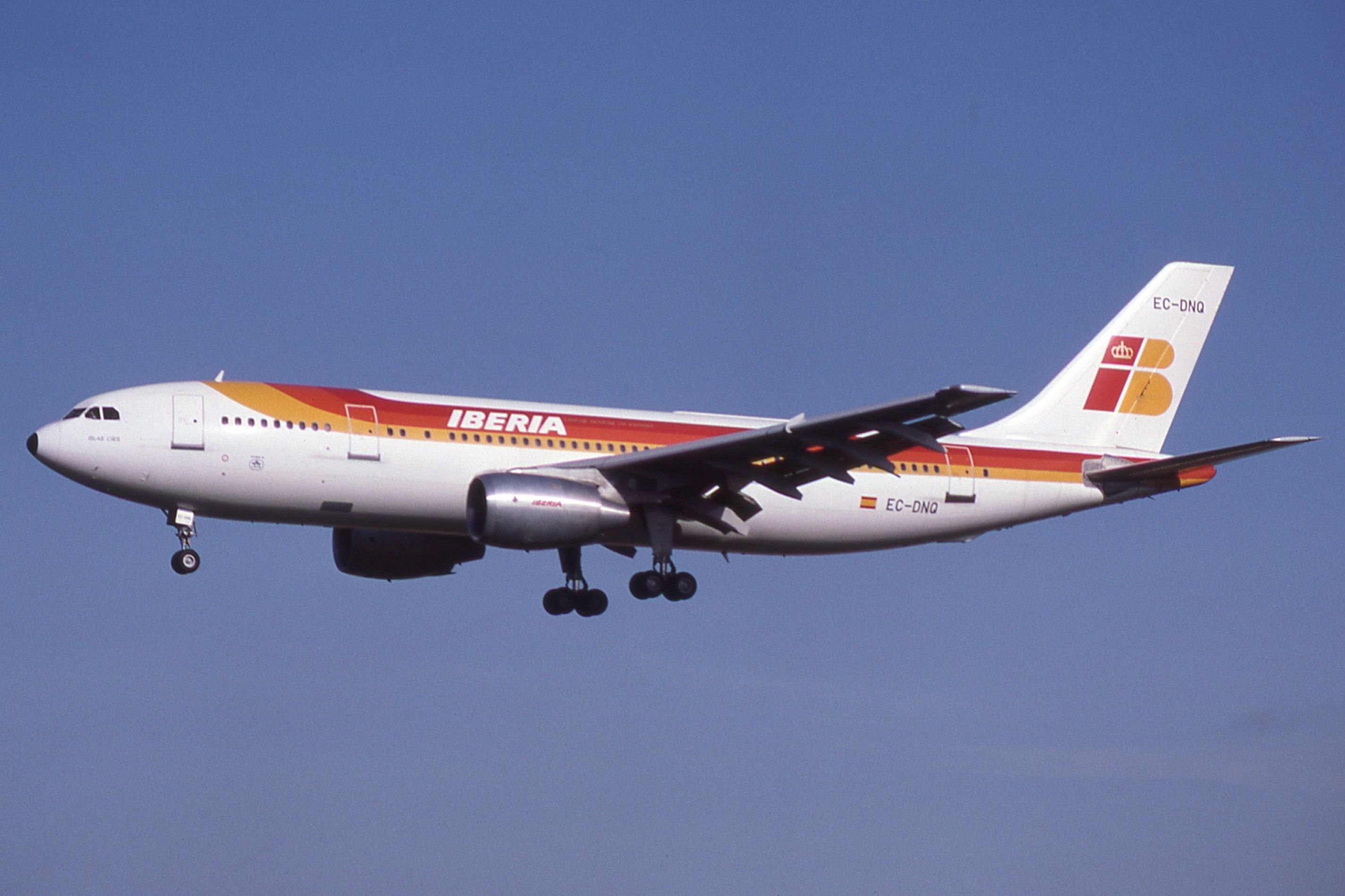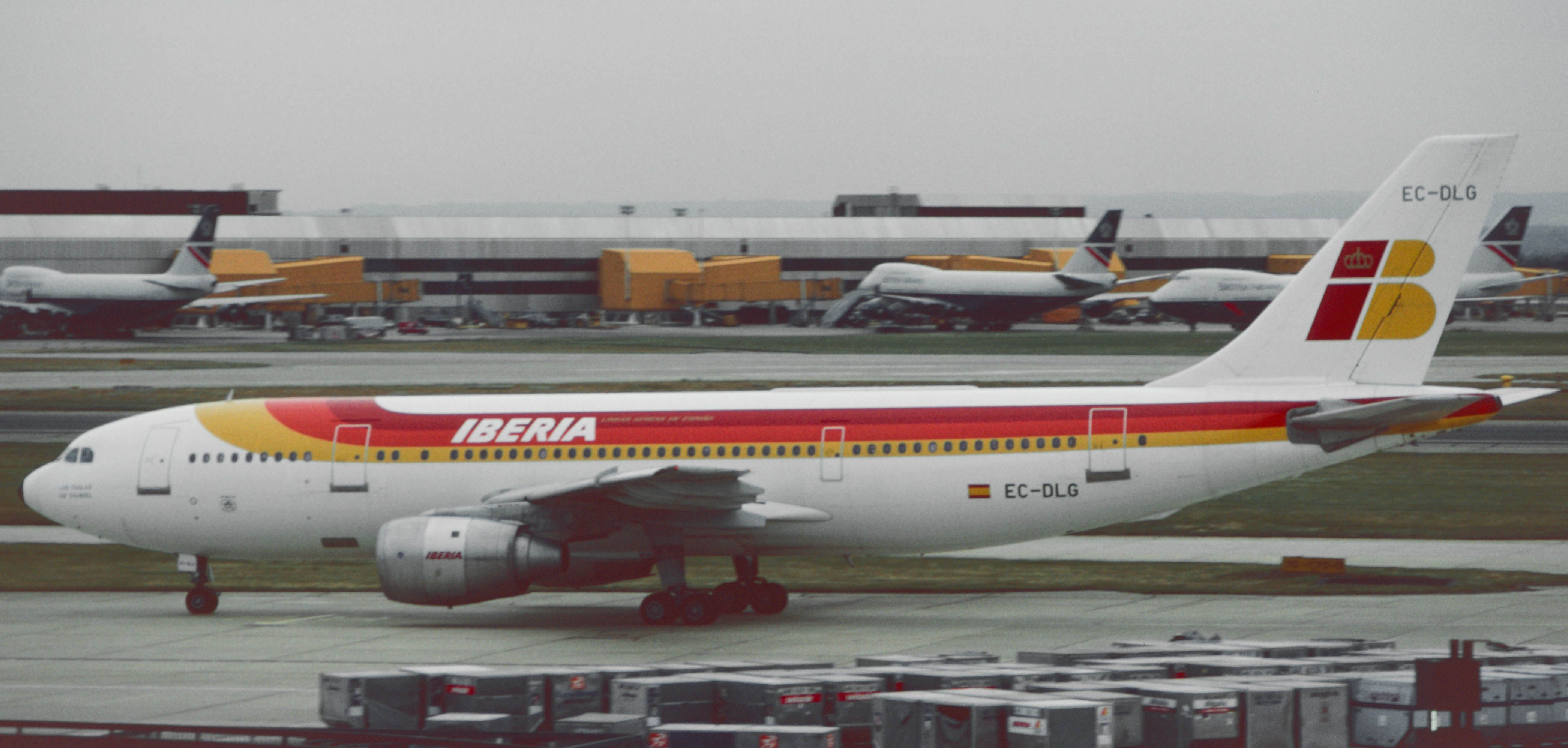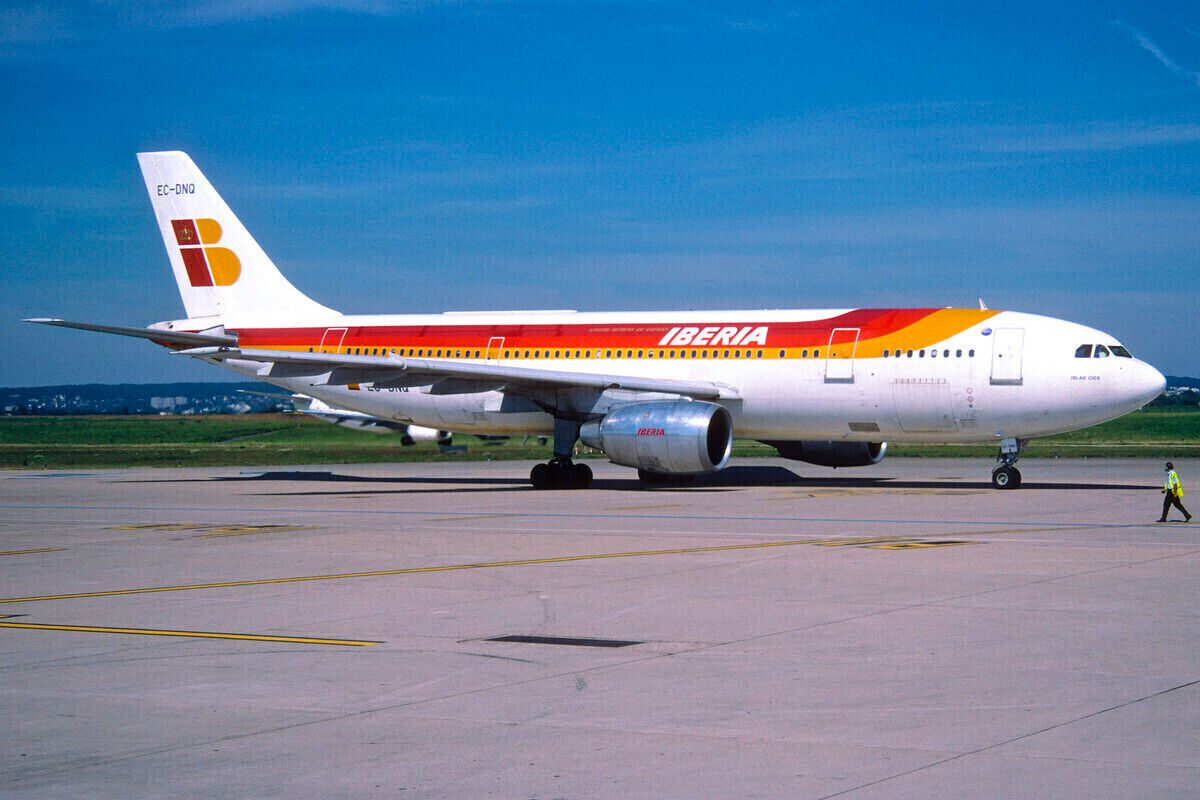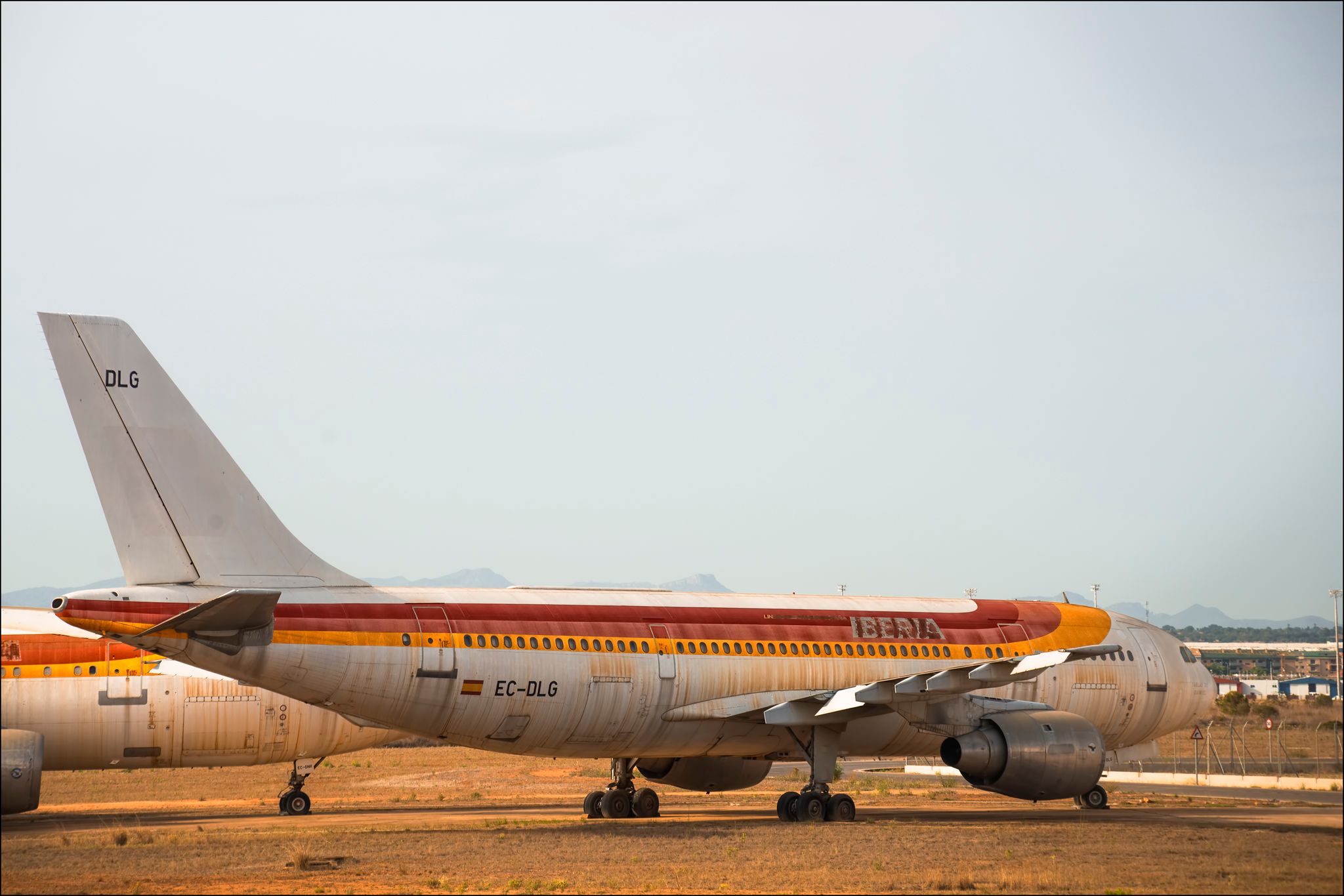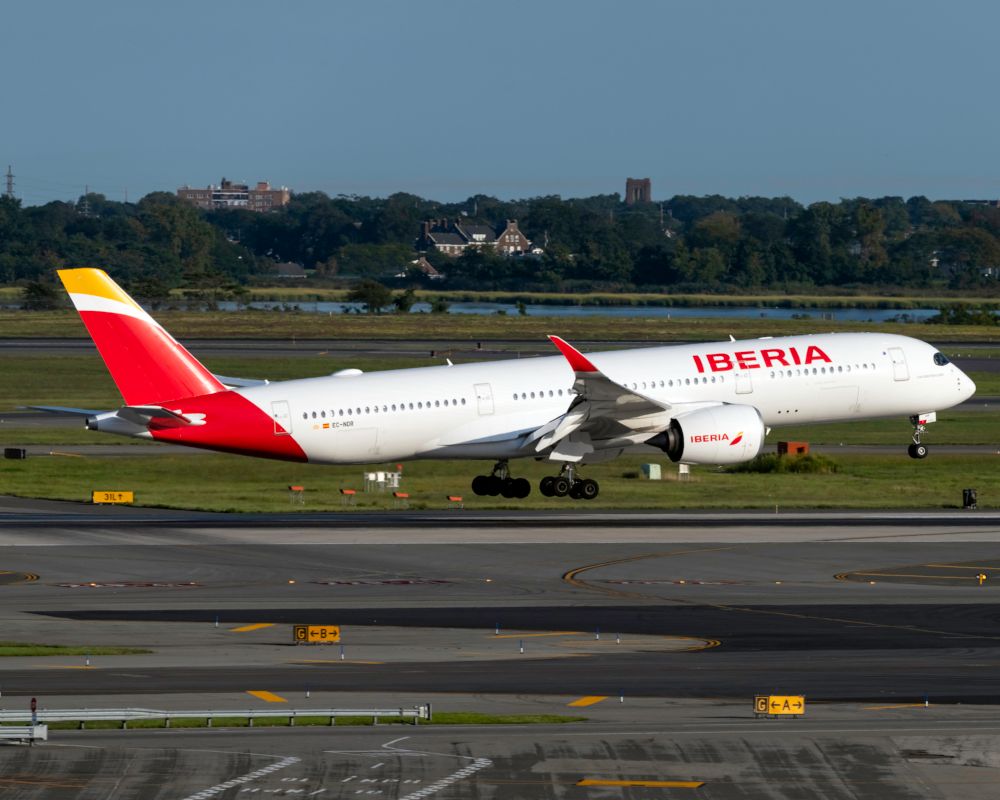Spanish flag carrier Iberia currently operates an all-Airbus fleet, serving over 129 destinations from Madrid-Barajas Airport (MAD). Today it has 110 Airbus aircraft in its fleet, consisting of the A320, A330, and A350 families. The airline owns several of them, while some have been leased.
Although it has operated several aircraft from other OEMs in the past, Iberia's relationship with the European manufacturer goes way back. Iberia once operated a fleet of Airbus A300 aircraft, so let's look deeper into its relationship with this widebody jetliner. We'll briefly examine the A300's role in Airbus' history.
The game-changing Airbus A300
The A300 holds a unique space in Airbus' timeline, bringing innovations to the global aviation industry. In the 60s, European manufacturers from France, the United Kingdom, and West Germany came together to form Airbus Industrie as a GIE to develop a widebody aircraft. Now let's look at why the firm named its first aircraft the A300.
The A300 started taking shape in 1970 and was designed to be smaller, lighter, and more efficient than its three-engine American counterparts. Despite a successful first flight, operators still doubted that Airbus had created the world's most economical aircraft. Hence, the manufacturers took it on a trip around the Americas to show off their latest invention.
The A300B was the world's first widebody twin-engine commercial aircraft, and its entry into the market changed the face of modern aviation forever. Similar aircraft like the A300-600 and A310 became leaders in the short to medium-haul sectors. Today, more than 200 A300/A310 aircraft are in operation, although most are freighters.
Take a look at our updated list of Airbus orders here.
Iberia's first Airbus design
As we have established, all of Iberia's present aircraft are Airbus-made. The airline's close relationship with the European manufacturing juggernaut goes back a long way, and it all started with the A300. For years, Iberia supported this European ambition that birthed the Airbus adventure.
In March 2021, the Spanish flag carrier celebrated 40 years since the arrival of its first A300. This was an A300B4-120, whose registration was EC-DLE. It bore the name Doñana and entered service on a flight to Paris Orly. Iberia's relationship with the A300 had begun.
The other deliveries
According to ch-aviation's fleet database, Iberia historically operated seven A300s. These were also of the A300B4 variant, which had entered service with Germanair in 1975. It had a greater fuel capacity than the A300B2 and wing-root Krüger flaps.
In terms of when Iberia's A300s arrived, 1981 proved the busiest year. In addition to the first delivery, the Spanish carrier received three more A300s in March and April that year. Another pair followed in February 1982.
Iberia's final two A300s joined the airline towards the end of the decade, following a seven-year hiatus in the airline's deliveries of the type. These joined in April 1989, although they had been re-registered by August of the same year. Having initially been designated as EC-273 and EC-274, they went on to fly under the registrations of EC-EON and EC-EOO, respectively.
When did they leave?
The A300 proved a hit at Iberia, and all the examples it received in the 1980s remained with the airline for their entire careers. Interestingly, Planespotters.net lists one more example that Iberia briefly operated leased from TransAer International Airlines in October 1997. Registered as EI-CJK, it had an all-economy 314-seat cabin.
Besides that, Iberia's A300s just about made it into the 21st century. Its first A300, EC-DLE, left the fleet for scrapping in Madrid, aged just shy of 20 years. This fate also befell EC-EOO. 2001 saw one more departure, that of EC-EON.
This left Iberia with five remaining A300s, but all of these would be gone by the end of the following year. They departed in June 2002, ending the airline's relationship with the A300. That being said, one example has been partially preserved. Specifically, the front section of EC-DNQ now serves as a crew trainer in Valencia.
As previously stated, Iberia's fleet now consists of 110 Airbus aircraft. This includes 27 A320-200s, 17 A350-900s, 16 A330-200s, 15 A320neos, 15 A321-200s, eight A330-300s, six A321-200s, and six A319-100s. It also has orders for up to 18 more Airbus jets, including eight A321XLRs
Did you ever fly on one of Iberia's A300s? If so, when and where did the Airbus widebody take you? Let us know your thoughts and experiences in the comments!
Sources: Planespotters.net, ch-aviation

